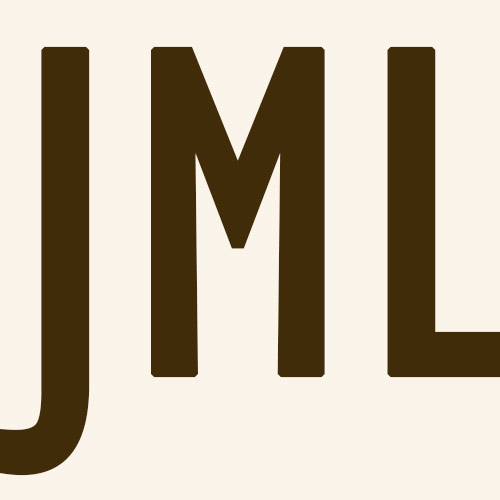Books

Mythical Narratives in Comparative European Literature / Le récit mythique dans la littérature européenne comparée, CompLit. Journal of European Literature, Arts and Society, Asun López-Varela y José Manuel Losada (dir.), 7 (2024), París, Classiques Garnier, 236 p. ISSN 2780-2523. ISBN 978-2-406-16969-7.
https://dx.doi.org/10.48611/isbn.978-2-406-16970-3.p.0009
https://classiques-garnier.com/complit-journal-of-european-literature-arts-and-society-en.html

Mito: teorías de un concepto controvertido, José Manuel Losada y Antonella Lipscomb (eds.), Madrid, Sial Pigmalión, 2023, 131 pp. ISBN 978-84-19928-03-0.
Work awarded with Premio Internacional de Pensamiento y Ensayo “Aristóteles” 2023.
― El Diario de Madrid (07/02/2024).
― Mi Ciudad Real (08/02/2024).
― La Opinión de Zamora (14/02/2024 y 11/03/2024).
― Études romanes de Brno, 46,1 (2025), pp. 292-293 (ISSN 2336-4416), Adriana Lastičová.
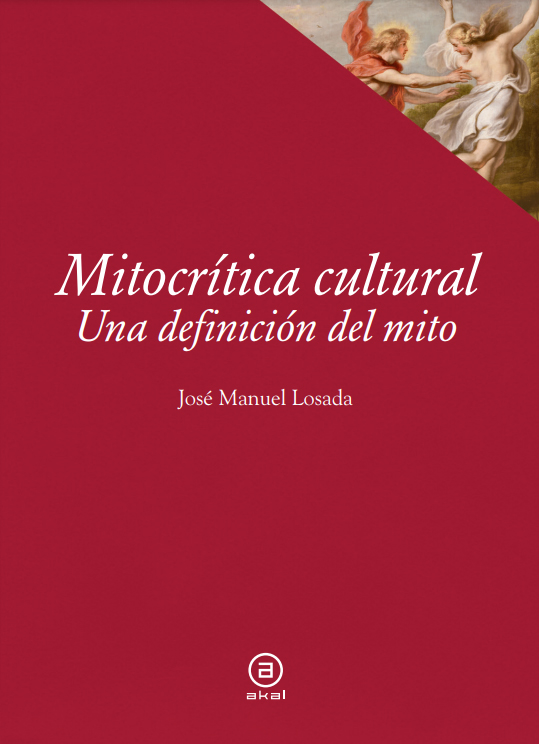
Mitocrítica cultural: Una definición del mito, José Manuel Losada, Madrid, Ediciones Akal, 2022, 832 pp. ISBN: 978-84-46-05267-8.
Summary
This first omnicomprehensive theory of myth provides a methodology, a hermeneutics and an epistemology: it gives clear guidelines to locate the myth in any mythical story, proposes heuristic keys for its objective interpretation and provides mythocriticism with a solid basis to claim itself as an autonomous science.
Presentations:
― Universidad Complutense (27/10/2022).
― Librería Berlín (Valencia, 18/05/2023).
― Librería Inusual (Granada, 25/05/2023).
― Biblioteca de Filosofía y Letras (Universidad de Granada, 26/05/2023).
― Ámbito Cultural de El Corte Inglés (Badajoz, 20/10/2023); reseña en Infoprovincia.
Reviews:
― Ἰlu. Revista de Ciencias de las Religiones (ISSN-e: 2174-5218), 28 (2023), pp. 1-2 (https://dx.doi.org/10.5209/ilur.86808, e-ISSN: 1988-3269), Enrique Santos Marinas.
― 1616: Anuario de Literatura Comparada, 14 (2024), pp. 342-345 (ISSN: 2445-2262), Laura Castillo Bel.
― Actio Nova. Revista de Teoría de la Literatura y Literatura Comparada, 7 (2023), pp. xxviii-xxxii (ISSN 2530-4437, https://doi.org/10.15366/actionova2023.7), Isabel González Gil.
― Amaltea. Revista de Mitocrítica, 15 (2023), pp. 1-3 (ISSN-e: 1989-1709, https://dx.doi.org/10.5209/amal.87547), Roxana Martínez Nieto.
― Anales de Filología Francesa, 32 (2024), pp. 250-253 (e-ISSN: 1989-4678; impreso: 0213-2958, https://doi.org/10.6018/analesff.607131), Natalia González de la Llana.
― Bajo Palabra. Revista de Filosofía, 34 (2023), época II, pp. 489-492 (e-ISSN: 1887-505X, https://doi.org/10.15366/bp2023.34), Jon Mentxakatorre Odriozola.
― Castilla. Estudios de Literatura, 15 (2024), pp. 854-857 (https://doi.org/10.24197/cel.15.2024.854-857), Carolina López Fic.
― Çédille. Revista de Estudios Franceses, 24 (2003), pp. 595-599 (ISSN 1699-4949, https://doi.org/10.25145/j.cedille.2023.24.31), Adriana Lastičová.
― CompLit. Journal of European Literature, Arts and Society, 7 (2024), 1, pp. 211-215, Mythical Narratives in Comparative European Literature / Le récit mythique dans la littérature européenne comparée, José Luis Miras.
― Complutense Journal of English Studies, 32 (2024), pp. 1-2 (ISSN-e: 2386-3935, https://dx.doi.org/10.5209/cjes.92384), Laura Navajas.
― Cuadernos de Filología Clásica. Estudios griegos e indoeuropeos, 34 (2024), pp. 273-274 (ISSN 1131-9070), https://dx.doi.org/10.5209/cfcg.94474, Óscar Martínez García.
― Cuadernos de Información y Comunicación, 29 (2024): p. 181 (ISSN: 1135-7991, https://dx.doi.org/10.5209/ciyc.96585).
― Dicenda. Estudios de lengua y literatura españolas, 41 (2023), pp. 261-263 (ISSN-e 1988-2556, http://dx.doi.org/10.5209/dice.91637), Mehmet Ilgürel.
― Estudios Clásicos (Sociedad Española de Estudios Clásicos), 164 (2023), pp. (e-ISSN: 2445-0537, https://doi.org/10.48232/eclas.164.17), Begoña Cadiñanos Martínez.
― Europe and Orient. Journal of Historical and Cultural Interactions, 1 (2023), pp. 139-142 (ISSN 2815-4894), José Manuel Correoso.
― Hypercultura (Hyperion University, Rumanía), 12 (2023), pp. 2-5 (ISSN 2559-2025), Jaime Segura San Miguel.
― La Razón (“El poder del mito”), 04/01/2023, David Hernández de la Fuente.
― Man of Bronze, 19/12/2022, Pedro Angosto.
― Minerva. Revista de Filología Clásica, 37 (2024), pp. 187-191 (ISSN 2530-6480; https://doi.org/10.24197/mrfc.37.2024.181-185). Encarna Fernández Gómez.
― Revista Chilena de Literatura, 111 (Mayo 2025), pp. 437-440 (ISSN-e: 0718-2295), Fernando Gil-González.
― Revista Complutense de Educación, 35(3), 2024, pp. 683-684 (ISSN: 1549-2230 / e-ISSN: 1549-2230, https://dx.doi.org/10.5209/rced.96239), Mercedes Pérez Agustín.
― Revista de Filología Alemana, 32 (2024), pp. 155-157 (ISSN: 1133-0406; https://dx.doi.org/10.5209/arab.98082), Alfonso Lombana Sánchez.
― Revista de Filología Románica, 41 (2024), pp. 193-194 (ISSN: 0212-999X; https://dx.doi.org/10.5209/rfrm.96916), Silviano Carrasco Yelmo.
― Revista de Literatura, 85, 170 (2023), pp. 699-719 (ISSN: 0034-849X), Xiana Sotelo.
― Revue de Littérature Comparée, 392 (2024), pp. 494-499 (ISSN: 1965-0264; https://doi.org/10.3917/rlc.392.0111 ), María del Carmen Lechosa Maldonado.
― RILCE. Revista de Filología Hispánica, 39.2 (2023), pp. 801-804 (ISSN-e: 2174-0917, https://doi.org/10.15581/008.39.2.801), María Flores-Fernández.
― Studia mythologica Slavica, 27 (2024), pp. 215-218 (Print: ISSN 1408-6271 / Online: ISSN 1581-128X), (José Manuel Correoso).
― Tropelías. Revista de Teoría de la Literatura y Literatura Comparada, 41 (2024), pp. 189-190 (ISSN-e 2255-5463), María del Carmen Lechosa.
Interviews:
― RTVE-La 2, Documental, productora: Anita G. Wonham, 4/12/2024.
― Revista de Letras, Berta Ares, 22/10/2022.
― Presentación en la Universidad Complutense (27/10/2022)
― Radio Intereconomía (“El marcapáginas”), David Felipe Arranz, 29/11/2022.
― Medievo (Twitch), Santiago Ramos García, 18/02/2023.
― El Cultural (“Es el mito, estúpido”, El Español), 20/09/2022, Berta Ares.
― El Debate, Adrián González, 01/03/2023.
― El Confidencial (“Alma, corazón y vida”), Ada Nuño, 23/06/2023. Traducida, con introducción original, por Brikena Smajli, en Exlibris, n.º 243, Albania (29/07/2023).
― La Opinión de Zamora, 04/02/2023, Beatriz Blanco García.
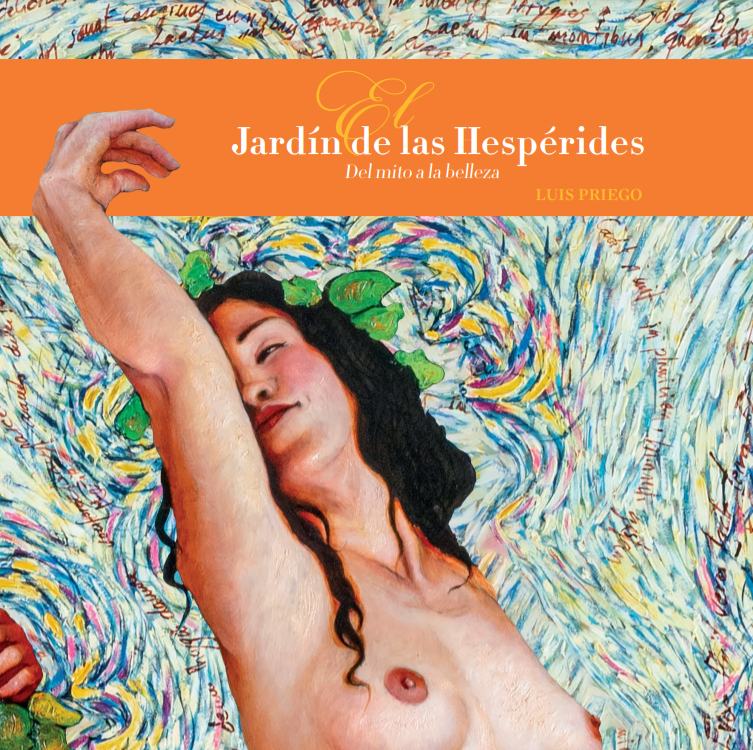
El Jardín de las Hespérides: del mito a la belleza, José Manuel Losada (ed.), Catálogo de la Exposición de Luis Priego en el c arte c (Centro de Arte Complutense), Madrid, Ediciones Complutense, 2022, 111 pp. ISBN: 978-84-09-36855-6.
Summary
The catalog (111 color pages) gathers all the works of the exhibition of oil paintings by Luis Priego, exhibited at the c arte c (Centro de Arte Complutense), Madrid, from January 20 to April 4, 2022. It also includes texts by various personalities, as well as a Prologue by the curator of the exhibition, José Manuel Losada.

Mito y ciencia ficción, José Manuel Losada & Antonella Lipscomb (eds.), Madrid (España), Sial Pigmalión, 2021, 143 p. ISBN: 978-84-18888-12-0.
Summary
To understand myth properly, it is necessary to address other correlates of our imaginary: esotericism, fantasy and science fiction. This volume studies the complex but surprising relationship between myth and science fiction. Myth refers to truths transmitted symbolically and emotionally, not deductively and arbitrarily, embedded in the depths of our individual being or acquired through a unique communion with the universe. In recent centuries, science fiction, whose first stirrings date back several millennia, has come to destabilize, at least in appearance, the foundations of myth, to judge it from ontologically and chronologically irreconcilable premises. The joint study of myth and science fiction responds to the heuristic need to analyze in depth the distinctive elements of two correlates and genres condemned to a tense but exciting coexistence.
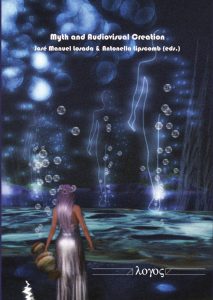
Myth and Audiovisual Creation, José Manuel Losada & Antonella Lipscomb (eds.), Berlín (Alemania), Logos Verlag, 2019, 224 p. ISBN: 978-3-8325-4966-4.
Summary
The purpose of this book is to understand how the digital revolution has affected myth, to what extent it retains its original essence and whether it has mutated into new forms. The articles discuss movies and television series that speak to the impact of transcendence on our lives and teach us that myth remains an important tool for understanding society and ourselves.
https://www.logos-verlag.de/cgi-bin/engbuchmid?isbn=4966&lng=deu&id=
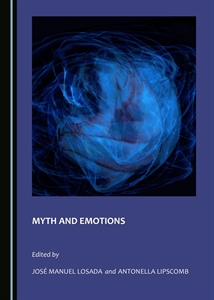
Myth and Emotions, José Manuel Losada & Antonella Lipscomb (eds.), Newcastle upon Tyne (Reino Unido), Cambridge Scholars Publishing, 2017, xviii-345 p. ISBN: 978-1-5275-0011-2.
Summary
The emotional character of myth underlies the framework of the research proposed for this trilingual volume. The book proposes a study, as broad and exhaustive as possible, that provides guidelines and models capable of interpreting the mythical-emotional phenomenon. Its implementation will be of great help in understanding and helping to understand a good part of the writing and art of modernity and postmodernity, as well as the culture and thought of our current society.
http://www.cambridgescholars.com/myth-and-emotions
https://www.academia.edu/35427330/Myth_and_Emotions
Reviews
― Amaltea. Revista de Mitocrítica (Madrid), 10, 2018, p. 129-131, Esther Bautista Naranjo.
http://revistas.ucm.es/index.php/AMAL/article/view/61015/4564456547727
http://dx.doi.org/10.5209/AMAL.61015
― “Mitokritika in sodobna literarna veda”, Primerjalna književnost (Ljubljana, Slovenija), 41, 3, 2018, p. 59-76, Metka Zupančič (vid. p. 70-73).
https://ojs.zrc-sazu.si/primerjalna_knjizevnost/article/view/7149/6669

Cinco siglos de Teresa. La proyección de la vida y los escritos de Santa Teresa de Jesús. Actas selectas del Congreso Internacional “Y tan alta vida espero. Santa Teresa o la llama permanente. De 1515 a 2015″, Esther Borrego y José Manuel Losada eds., Madrid, Fundación Mª Cristina Masaveu Peterson, 2016, 366 p. ISBN: 978-84-617-7170-7.
Summary
This volume, produced under the scientific direction of Professor Esther Borrego and Professor José Manuel Losada, collects part of the studies originally presented as papers or communications at the International Congress, which the Faculty of Philology of the Complutense University organized from 20 to 23 October 2015, on the occasion of the V centenary of the birth of St. Teresa, the most universal of our writers. The title of the meeting – “And so high life I hope. Santa Teresa or the permanent flame. From 1515 to 2015 – suggested concepts such as “pervivencia”, ‘permanence’ or “projection”, undoubtedly fanned by that spiritual fire that emanated from the life and writings of the Saint.
Review
― Atrio. Revista de Historia del Arte (Sevilla), 23, 2017, p. 172-174, Celia Redondo Blasco.
https://www.upo.es/revistas/index.php/atrio/article/view/3774/2992
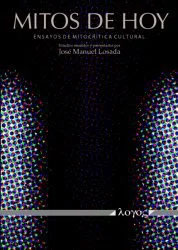
Mitos de hoy Ensayos de mitocrítica cultural, estudios reunidos y presentados por José Manuel Losada, Berlín, Logos Verlag, 2016, 211 p. ISBN: 978-3-8325-4239-9.
Summary
Cultural Mythocriticism, here put into practice, combines the traditional tools of mythocriticism with factors not systematically considered by previous criticism: globalization, immanence and consumerism. It thus offers a modest contribution to the task of identifying, analyzing and synthesizing the typology of the manifestations of myth in contemporary literature, arts and media. This will make it easier to understand ourselves in this bewildering world.
Reviews
― Journal of Comparative Literature and Aesthetics (Odisha, India), 29, 1-2, 2016, p. 143-145, Manuel Botero Camacho.
― ’Ilu. Revista de Ciencias de las Religiones (Madrid), 21, 2016, p. 271-273, Borja Cano Vidal.
http://dx.doi. org/10.5209/ILUR.53862
http://revistas.ucm.es/index.php/ILUR/article/view/53862/49306
― Cuadernos de Información y Comunicación (Madrid), 22, 2017, p. 319-320, Esther Bautista Naranjo. http://dx.doi.org/10.5209/CIYC.55986 http://revistas.ucm.es/index.php/CIYC/article/view/55986/50718
― Amaltea, Revista de Mitocrítica (Madrid), 9, 2017, p. 87-89, Cristina Salcedo González.
http://revistas.ucm.es/index.php/AMAL/article/view/57182/51581
http://dx.doi.org/10.5209/AMAL.57182
― Minerva, Revista de Filología Clásica (Valladolid), 31, 2018, p. 291-294, Carlos Sánchez Pérez.
https://doi.org/10.24197/mrfc.31.2018.291-294
https://revistas.uva.es/index.php/minerva/article/view/1161
― “Mitokritika in sodobna literarna veda”, Primerjalna književnost (Ljubljana, Slovenija), 41, 3, 2018, p. 59-76, Metka Zupančič (vid. p. 70-73).
https://ojs.zrc-sazu.si/primerjalna_knjizevnost/article/view/7149/6669

Myths in Crisis: The Crisis of Myth, José Manuel Losada & Antonella Lipscomb (eds.), Newcastle upon Tyne (Reino Unido), Cambridge Scholars Publishing, 2015, xxix-441 p. ISBN: 978-1-4438-7814-2.
Summary
This trilingual volume investigates the extent to which myths are affected by the crises of the twentieth and twenty-first centuries. Four theoretical studies analyze both structural crises, which involve the distortion or disappearance of myth, and crises of concept and terminology, which currently threaten the study of mythology.
The most voluminous part of the book focuses on the crises experienced by ancient, medieval and modern literary myths from a global perspective: contemporary psychology, morality, politics and metaliterature. This volume closes with the crises suffered by the myths of immanence: historical and fictitious characters, mythologized peoples and languages.
Reviews
― Journal of Comparative Literature and Aesthetics (Odisha, India), xxxix, 1-2, 2016, p. 145-149, Juan González Etxeberria.
― Revista de Literatura (Madrid), lxxix, 158, 2017, p. 625-627, Borja Cano Vidal.
http://revistadeliteratura.revistas.csic.es/index.php/revistadeliteratura/article/view/431/446
― “Mitokritika in sodobna literarna veda”, Primerjalna književnost (Ljubljana, Slovenija), 41, 3, 2018, p. 59-76, Metka Zupančič (vid. p. 70-73).
https://ojs.zrc-sazu.si/primerjalna_knjizevnost/article/view/7149/6669
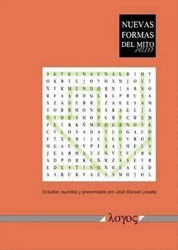
Nuevas formas del mito. Una metodología interdisciplinar, Berlin, Logos Verlag, 2015, 221 p. ISBN: 978-3-8325-4040-1.
Summary
Myth: explanatory, symbolic and dynamic account of one or more extraordinary personal events with a transcendent referent, which in principle lacks historical testimony, is composed of thematic invariants subject to crisis, presents a conflictive, emotional, functional, ritual character, and always refers to an absolute, particular or universal cosmogony or eschatology.
This definition, general, cold and indeterminate, requires a time, a space, and above all a consciousness that lives it. Myth is not a mental construct alien to sociocultural vicissitudes: it bears the imprint of each individual and society on its skin and entrails. The myth is a slave deluded with freedom: just as it cannot completely rid itself of an inherited form and content, neither can it stop dreaming of new forms and contents, promises of an improbable liberation.
New forms of myth narrate these forms and contents in the new spatio-temporal conditions. The novelty of the method consists in advocating the combination of the traditional tools of mythocriticism with factors not systematically considered by previous criticism: globalization, immanence and consumerism. It thus offers a modest contribution to the task of identifying, analyzing and synthesizing the typology of the manifestations of myth in contemporary literature, arts and media. This will make it easier to understand our consciousness in this bewildering world.
Reviews
― Çédille. Revista de Estudios Franceses, “Los retos de la mitocrítica ante las nuevas formas del mundo en el mundo globalizado”, 12, abril de 2016, p. 521-526, Tagirem Gallego García.
http:// cedille.webs.ull.es/12/29gallego.pdf
― ’Ilu. Revista de Ciencias de las Religiones (Madrid), 21, 2016, p. 268-270, Borja Cano Vidal.
http://revistas.ucm.es/index.php/ILUR/article/view/53862 y http://dx.doi.org/ 10.5209/ILUR.53861
― Bajo Palabra. Revista de Filosofía (Madrid), II Época, 12, 2016, p. 413-415, Helena González-Vaquerizo.
https://repositorio.uam.es/handle/10486/675044
― Amaltea. Revista de Mitocrítica (Madrid), 8, 2016, p. 69-74, Luis Alberto Pérez Amezcua.
http://dx. doi.org/10.5209/AMAL.53424
http://revistas.ucm.es/index.php/AMAL/article/view/53424/49004
― Thélème. Revista Complutense de Estudios Franceses (Madrid), 31, 2, 2016, p. 345-347, José Carlos Marco Vega. http://dx.doi.org/10.5209/THEL.54097
https://revistas.ucm.es/index.php/THEL/article/view/ 54097/49486
― Minerva. Revista de Filología Clásica (Valladolid), 30 (2017), p. 367-370, Adrián Menéndez de la Cuesta.
https://revistas.uva.es/index.php/minerva/article/view/1180
https://doi.org/10.24197/mrfc.30.2017.367-370
― “Mitokritika in sodobna literarna veda”, Primerjalna književnost (Ljubljana, Slovenija), 41, 3, 2018, p. 59-76, Metka Zupančič (vid. p. 70-73).
https://ojs.zrc-sazu.si/primerjalna_knjizevnost/article/view/7149/6669
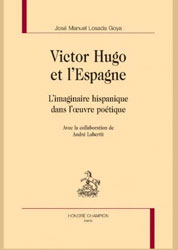
Victor Hugo et l’Espagne. L’imaginaire hispanique dans l’œuvre poétique. Avec la collaboration d’André Labertit, Paris, Honoré Champion, 2014, 560 p. ISBN: 978-2-7453-2698-0
Summary
Victor Hugo’s stay in Madrid when he was a child, his trip to the Basque Country and Navarre as an adult, and his Spanish readings in original or translated texts, left deep traces in the poet. This book gathers and analyzes them in all his poetic work re-examined as a whole. With an important novelty: beyond the collection and identification of data, this study addresses the evaluation of the Spanish facet in the Hugolian poetic universe. Weighed and placed in the trajectory of production, this Hispanic influence takes on significance and uniqueness both in Hugo himself and in the perspective of the French romantic current.
Reviews
― L’Écho Hugo (París), 13, 2014, p. 30-31, Arnaud Laster.
― Fabula. L’Information en Littérature (París), 1 julio 2014, Perrine Coudurier.
http:// www.fabula.org/actualites/jose-manuel-losada-goya-victor-hugo-et-l-espagne-l-imagin aire-hispanique-dans-l-oeuvre-poetique_63733.php
― Revue de Littérature Comparée (París), 355, 2015, p. 345-346, Véronique Gély.
― Revue d’Histoire Littéraire de la France (París), 115, 1, marzo 2015, p. 210-211, Michel Garcia.
https://www.cairn.info/revue-d-histoire-litteraire-de-la-france-2015-1-page-191.htm
― Studi Francesi (Turín), 179 (LX-II), 2016, p. 346-347, Jean-Marc Hovasse.
https://studifrancesi.revues.org/4416

Abordajes. Mitos y reflexiones sobre el mar, dir. José Manuel Losada, Madrid, Instituto Español de Oceanografía, 2014, 274 p., 95 ilustr. ISBN: 978-84-95877-51-2.
Summary
This is the purpose of the present volume: to give an account of what the sea has represented and represents for us. Hence the title of the volume: “boardings” in a metaphorical sense: encounters between ships carrying various goods, assaults – by bow, stern, port, starboard: any attack will do – to get our hands on the most valuable things the sea can give us. The sea has become a school, an apprenticeship. It is about exploring the other side of the sea: not the quantified sea, but the imagined sea. Over the centuries, the waters have inspired countless mental constructions about its currents and its animals, its cliffs and its depths. A culture of the sea has thus arisen, different from that observed through the microscope, which this book presents in a condensed form.
Reviews
― ’Ilu, Revista de Ciencias de las Religiones (Madrid), 20, 2015, p. 319-322, Helena González-Vaquerizo. https://revistas.ucm.es/index.php/ILUR/issue/view/2839/ showToc
― Revista del Instituto Español de Oceanografía (Madrid), 21, julio 2014, p. 80-81
https://issuu.com/anamorillaskieffer/docs/ieo21
― Amaltea. Revista de Mitocrítica (Madrid), 10, 2018, p. 132-136, Isabel García Adánez.
http://revistas.ucm.es/index.php/AMAL/article/view/61016/4564456547728
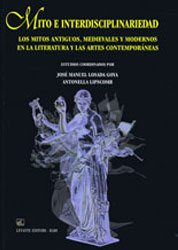
Mito e interdisciplinariedad. Los mitos antiguos, medievales y modernos en la literatura y las artes contemporáneas, José Manuel Losada Goya & Antonella Lipscomb (eds.), Bari (Italia), Levante Editori, 2013, 458 p. ISBN: 978-88-7949-623-0.
Summary
Until now, mythocriticism had proceeded to the identification of myths within the literary and artistic productions of each epoch or to the exposition of the resistance of mythical factors to the trends of literary and artistic currents. The approach was generally limited to a single mode of expression: literary or artistic. Nowadays, however, myths are characterized by the use of a multiplicity of media, each of which has traditionally been studied from a single discipline. The main objective of this book is to decipher the reasons for this versatility of myth and its interdisciplinary use. In this way it will be possible to understand much of the writing of postmodernity and the culture of today’s society.
Reviews
Mayron Estefan Cantillo Lucuara. Revista de Filología Inglesa (Valladolid), 35, 2015, p. 185-190.
Luis Díaz Viana. Ínsula (Madrid-Barcelona), LXX-819 (2015), p. 23-25.
Luis Unceta Gómez. Minerva (Madrid), 28 (2015), p. 413-417,
María Ángeles Chaparro. Cuadernos de Información y Comunicación (Madrid), 20 (2015), p. 183-199.
(https://revistas.ucm.es/index.php/CIYC/issue/current)
Carlos Villanueva García. Hermes. Revista del Mundo Clásico (Madrid), 17 (abril 2014), p. 47.
(https://sites.google.com/site/hermesrevistadelmundoclasico/home).
Ana Isabel Jiménez San Cristóbal, ’Ilu. Revista de Ciencias de las Religiones (Madrid), 19 (2014), 333-334.
Affatato, Rosa, Amaltea. Revista de Mitocrítica (Madrid), 6 (2014), p. 387-394. (pdf)
Carlos Sánchez Pérez, Revista de Hispanismo Filosófico (Madrid), 19 (2014), p. 254-258.
Marian Chaparro, Revista de Literatura (Madrid), 76, 151 (enero-junio 2014), 367-369
Aurélie Renaud, Thélème (Madrid), 29, 2 (2014), p. 419-420.
José Sarzi Amade y Leonor Taiano Campoverde, Mito. Revista Cultural, nº 8 (11 mar 2014).
Navi Rodríguez, “Mitocrítica: cómo se refleja un mito en el arte”, Esfinge, Nueva época, 19 abr (2014), p. 10-14. (pdf)
Felice Laudadio, Contrappunti (Italy), 8 Feb (2014).
Por Arte de Blog. Espacio virtual de la Biblioteca de la Facultad de Bellas Artes.
Vittorio Polito, Giornale di Puglia (Italia), 9 oct (2013).

Myth and Subversion in the Contemporary Novel, José Manuel Losada & Marta Guirao (eds.), Newcastle upon Tyne (Reino Unido), Cambridge Scholars Publishing, 2012, 510 p. ISBN: 1-4438-3746-6.
Summary
This bilingual volume identifies and explains the subversive practice applied to ancient, medieval and modern myths in the contemporary novel.
The book opens with two theoretical studies on the subversive tendency and the reinvention of myths today. The analysis of various texts of primary importance continues. First, classical myths are reviewed in authors such as André Gide, Thomas Pynchon, Julio Cortázar, Italo Calvino or Christa Wolf (e.g., Theseus, Oedipus, Medea). Secondly, the rewriting of biblical myths according to Giorgio Bassani, Julian Barnes or Cytnthia Ozick (e.g., the flood or the Golem). Thirdly, modern myths in the fiction of Günter Grass, Paul Auster or Clara Janés (e.g. Faust, the ghost, Ophelia). The volume also pays attention to the relationship between myth and art (its recurrence in contemporary advertising, painting and cinema) and to the intercultural aspect of myths: mestizaje in the Latin American novels of Augusto Roa Bastos and Carlos Fuentes, or in the Hindu-themed novels of Bharati Mukherjee.
The compilation is the result of an exquisite selection of 37 texts among the more than 200 proposed for the International Symposium Myth and Subversion (Madrid, March 2011) by prestigious researchers from 25 countries.
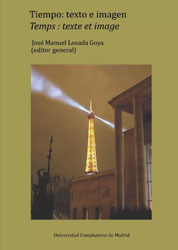
Tiempo: texto e imagen. Temps: texte et image, José Manuel Losada Goya (ed.), Madrid, Universidad Complutense, 2011, 1194 p. ISBN: 978-84-96701-37-3
Summary
This volume combines a reflection on temporality with an opening towards transversality and interculturality in French and Francophone studies. The studies contained in the book follow the following general thematic lines:
- Time from textual linguistics, pragmatics and psycholinguistics. Diachronic study of the French verbal system: towards an understanding of contemporary verbal semantics. Contrastive grammar of the different verbal systems. Phraseology and paremiology.
- Fictional tenses: literature and other aesthetic manifestations in the French and French-speaking world. Interrelationships in the plurality of temporal treatments that the very essence of fiction favors.
- Didactics of the temporality in FLE and other teachings: T.I.C. and teaching-learning strategies.
- Translating time: challenges and impossibilities. The translation of temporality in different languages and media (literary text, journalistic text, cinematographic text, comic, photography, video games, software localization, etc.)
Interdisciplinary and intercultural dialogues: the treatment of temporality in French and French-speaking society and culture, from the perspective of the social and human sciences.

Awarded with Premio Internazionale Giovi-Cittá di Salerno 2011, granted by Asociación Demoetnoantropológica “I Castellani” y el Senado italiano
Mito y mundo contemporáneo. La recepción de los mitos antiguos, medievales y modernos en la literatura contemporánea, José Manuel Losada Goya (ed.), Bari (Italia), Levante Editori, 2010, 785 p. ISBN: 978-88-7949-547-9.
Summary
This volume brings together studies on the theory of myths and their reception in contemporary Western literature. The theoretical works approach the conception of myths from the most diverse orientations: German romantic idealism, psychoanalysis, structuralism, structural thematism, philosophy and religious anthropology. The reception works cover ancient, medieval and modern myths in contemporary European and American novels, poetry and theater. Three theoretical studies of Greek, medieval, and modern mythology frame the practical issues of reception. The myths of Greco-Latin antiquity extend to gods (Ceres), Cyclops (Polyphemus), Titans (Prometheus), humans of hybrid descent (Dionysus, Narcissus, Aeneas), humans of royal blood (Orestes, Electra, Antigone, Ariadne, Ulysses, Penelope), and other heroes such as Philoctetes. Medieval myths include Celtic myths (the Grail, Cuchulain, Fionn mac Cumhaill, Bran), Germanic myths (the Nibelungen) and authentic recreations, such as that of Ana M. Matute. Modern myths are very varied: from Frankenstein and the vampire to new cities (Berlin or New York) and recreations of historical characters.
Reviews (selection)
Felice Laudadio, Contrappunti, feb (2012): 10.
Vittorio Polito, Giornale di Puglia, ene (2012)
Rocío Peñalta Catalán, Revista de Filología Románica (Madrid), 28 (2011): 227-228.
Juan Herrero Cecilia, Thélème. Revista Complutense de Estudios Franceses, 26 (2011): 341-344 (1ª parte) & 27 (2012): 411-416 (2ª parte).
Vittorio Polito, “Le leggende nel mondo contemporaneo”, Barisera (Bari, Italy), 14.06 (2010): 22.
José Manuel Estévez-Saá, “Los grandes mitos de la historia a través de la literatura contemporánea”, El Correo Gallego (A Coruña), 1.07 (2010).
Borja Mozo, Amaltea, revista de mitocrítica (Madrid), 2 (2010): 209-210.

Métamorphoses du roman français. Avatars d’un genre dévorateur, José Manuel Losada Goya (ed.), Lovaina (Bélgica), Peeters, 2010, 314 p. ISBN: 978-90-429-2201-3.
Summary
Since its creation, the novel has not ceased to undergo various metamorphoses. The Breton romances of Chrétien were followed, at the beginning of the 15th century, by innovative texts such as Ysaÿe le Triste. The novels of the Renaissance move away from the question of the true and the false, already announcing the pre-modern poetics (Merlin, Baldus, Les Angoysses douloureuses, Alectoris, Heptaméron). From J.-P. Camus to Abbé Faydit, the idea of novel-religion as antinomy is consolidated; however, the questions that focus the reflection on the novel in the 17th century and its practices are others: the ambition of exemplarity (the Scudéry) or the adequacy of styles to the characters (Sorel). Facing a possible exhaustion of the genre, the 18th century created new solutions: the fusion of novels within the framework of the structure (Challe), the interferences between forms and contents (Voltaire), the empirical inflection (Diderot, Laclos) or the need to make passions felt (Épinay’s circle). In the nineteenth century, the novel wants to tell the true self rather than a story (Sénancour, Chateaubriand), prefers the interior monologue (Stendhal) or tries to illustrate the relationship between femininity and autobiography (Sand). At the end of the novel, the representation is modified: the observing subject is changed (Hugo) and the intrigue is devalued in favor of the environment (Zola). Finally, the 20th century offers paths that are difficult to unify: the classical and innovative nature of the Proustian project at the same time, the balance between intimate experiences and the rhythmic fabric of the word (Giono, Butor), the interweaving of writing and feminism (A. Ernaux), the influence of news and events (Besson, Jonquet), the living symbiosis of cultures (Cheng) or, finally, the paradox of wanting to limit protest movements such as May ’68.
Index
Reviews
Lucien Nouis, Eighteenth-Century Fiction (Hamilton, Ontario, Canadá), 24, 4 (2012): 738-740.
Jean Claude Abada Medjo, Le français à l’université, 16.03 (2011).
Sarah Lacoste, Fabula (Logroño), 23.03 (2010).
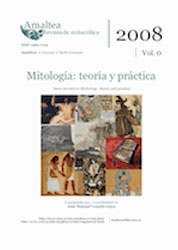
Mitología: Teoría y práctica, José Manuel Losada Goya (coord.), Amaltea. Revista de Mitocrítica (Madrid), nº 0 (2008), 303 p. ISSN: 1989-1709.
Summary
15 articles devoted to theoretical aspects of mythocriticism and to the study of the presence of classical myths in contemporary European literature, from Wilde to Giraudoux via Stefan George.
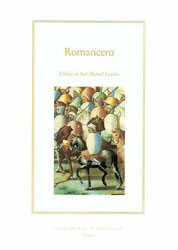
Romancero, traduction et notes de José Manuel Losada, présentation de José Manuel Losada Goya et André Labertit, Paris, Imprimerie Nationale, “La Salamandre”, 2003, 360 p. ISBN: 2-7433-0255-0.
Summary
A collection of generally anonymous lyrical and epic texts, the Romancero reconstructs the destiny of the Spanish nation throughout its history (the vicissitudes of the Muslim invasion, the Christian reply under the banner of the Cid), its legend (the battle of the Spanish nobles against the paladin Roland) and its poetry (charming verses intoned by a young peasant girl on the banks of a river). The Romancero has suffered the ups and downs of fame: it has been considered over the centuries sometimes as a lesson in national history and other times as the vessel or melting pot of the feelings of a people. Hence, it was learned and transmitted by heart. It had its heyday in the 16th century and then began a gradual descent into the waters of Lethe. It was revived in the 17th century, reclaimed by the great writers of the Golden Age such as Cervantes, Lope and Calderón. Expelled from the written literary sphere in the 18th century, romances patiently awaited their rehabilitation, which came at the hands of the German (Friedrich Schlegel, Grimm, Goethe) and English (Scott, Byron) Romantics, followed by France, especially under the patronage of Victor Hugo, an unconditional admirer of this “strange Iliad that has no Homer”.
Reviews
Philippe Lançon, Libération (París), 6.05 (2003).
Jo.S., Le Monde (Paris), 4.06 (2003).
Michel Stanesco, Cahiers de Civilisation Médiévale (Poitiers), 50 (2007): 86-87.
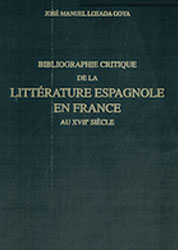
Bibliographie critique de la littérature espagnole en France au XVIIe siècle. Presence et influence, Ginebra (Suiza), Droz, “Travaux du Grand Siècle”, 1999, xxii+671 p. ISBN: 2-600-00313-4.
Summary
The aim of this study is threefold: to establish a comparative analysis of the presence of Spanish literature in French literature throughout the 17th century, to provide the user with a certain basis for research on the subject during the 18th and 20th centuries, and to understand the deep meaning of the evolution of this presence. For this reason, the work, which devotes 4/5 of the text to theoretical, critical and comparative reflection, inaugurates a new conception of the bibliographic genre. Thanks to a research project of the Ministry and other aids, it has been possible to use 1150 original editions of 330 authors of the period, 750 critical studies and to establish an in-depth examination of the aforementioned reception. An extensive introduction, the establishment of all the editions in both languages in the 17th century and the commentaries throughout the 517 notices that compose the set have also helped to carefully consider the problems of periodization, the inoperative nature of value judgments as well as to build a theory of the genesis of literary reception.
Reviews (selection)
Suzanne Guellouz, Papers on French Seventeenth Century Literature (Paris / Tübingen / Seattle), 28 (2001): 198-201
Joseph C. Holub, Hispanic Review (Philadelphia, PA), 69 (2001): 265-266.
Barry Taylor, Bulletin of Hispanic Studies (Glasgow), 72 (2000): 635-636.
Margaret A. Rees, Modern Language Review (Leeds, Inglaterra), 95 (2000): 595.
Daniel-Henri Pageaux, Revue de Littérature Comparée (París), 2 (2000): 217.
Cecilia Rizza, Studi Francesi (Turín), 130 (2000).
Guy Jucquois, Les Lettres Romanes (Lovaina), 54 (2000): 189.
Stéphane Macé, XVIIe Siècle (París), 52 (2000): 740.
Daniel Vaillancourt, Recherche Littéraire / Literary Research (Western Ontario, Canadá), 31 (1999): 40-44.
Cristina Sánchez Tallafigo, Dicenda (Madrid), 17 (1999): 405-406.
Francisco Capitán, Revista de Literatura (Madrid), 61 (1999): 594-599.
J. Trethewey & J.P. Short, The Years’s Work in Modern Languages Studies (Londres) 61 (1999): 122.

Bibliography of the Myth of Don Juan in Literary History, José Manuel Losada Goya (ed.), The Edwin Mellen Press, Lewiston – Queenston – Lampeter, 1997, xviii+216 p. ISBN: 0-7734-8450-7.
Summary
Bibliographies on Don Juan often resulted in compilations on the subject of the libertine and the seducer: there was a need for a work that would account for all the versions referring exclusively to the Don Juan myth. An extensive introduction addresses both the mythical configuration of the Spanish seducer (he requires a group of women, a summons, a transcendence, a servant and a challenging deadline) and his malleability (linguistic problematics, geographical overlap, etc.). This bibliography offers a wide range of references grouped into versions, critical studies (books and articles) and translations. It devotes particular attention to the most significant authors: Tirso de Molina, Molière, Mozart, Byron, Zorilla, Shaw, etc., and takes into account the most recent works, both creative and critical, related to the subject. The study offers an index of authors at the end.
This bibliography has 2,884 entries devoted to literatures in 6 languages and an appendix devoted to Slavic languages. It includes relevant material from the Middle Ages to the end of the 20th century, new translations not included in other bibliographies, and 1,700 critical studies on the myth of Don Juan in European literature.
Reviews
Wladimir Krysinski, catedrático de literatura comparada de la universidad de Montreal y B.E. Brandt en MellenPress.

De Baudelaire a Lorca, José Manuel Losada Goya, Kurt Reichenberger y Alfredo Rodríguez López-Vázquez (eds.), Kassel (Alemania), Reichenberger, “Problemata Literaria” nº 31-33, 1996, 3 vol., 951 p. ISBN: 3-930700-59-X (vol. I: 3-930700-60-3; vol. II: 3-930700-61-1; vol. III: 3-930700-62-X).
Summary
The work aims to make a representative sweep of the main changes in modern literature between these two emblematic authors: from the morphological point of view, the rupture of the inherited prosody, the rejection of classical motifs; from the ideological point of view, the split with the past, the attraction for the unfinished, for insignification, for fragmentation, for the autonomy of conscience.
Reviews
Janet Pérez, Hispania (Washington), 81 (1998): 312-313.
Federico Bonaddio, Bulletin of Hispanic Studies (Glasgow), 78 (2001): 284.
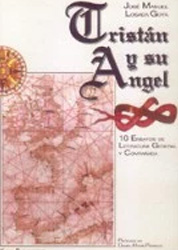
Tristán y su ángel. Diez ensayos de literatura general y comparada, prólogo de Daniel-Henri Pageaux, Kassel (Alemania), Reichenberger, col. “Problemata Literaria”, 1995, X-188 p.+5 ilustr. ISBN: 3-930700-13-1.
Summary
The work approaches a series of myths and themes from a comparative perspective in order to show the ideological permeability in various literatures, especially in the reception of classical literatures and the transmission of models between French and Spanish literature. Among the myths, that of Tristan (his hypothetical freedom), that of Venus Cytherea (her presence in Renaissance compendia, the reason for her absences); among the themes, the solitude of the poet (from the famous “Beatus ille” to the melancholy of modernity), impurity in the novel of the 17th-19th centuries (the cleansing of blood in Don Quixote, the anthropological consequences of the fall in Rousseau’s New Eloise, the awareness of the stain on the fallen angel in the romantic novel). The volume is prefaced by Professor Daniel-Henri Pageaux, professor of general and comparative literature at the University of Paris-Nouvelle Sorbonne (Paris III).
Reviews
Javier de Navascués, Rilce (Pamplona) 11 (1995): 173-175.
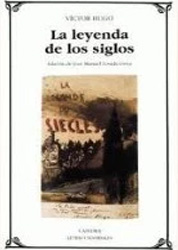
La Leyenda de los siglos (selección de textos), de Víctor Hugo, editado por José Manuel Losada Goya, Madrid, Cátedra, “Letras Universales”, nº 211, 1994, 322 p. ISBN: 84-376-1291-8.
Summary
This translation puts in the hands of a wide public a fundamental text by Victor Hugo accompanied by a consistent critical apparatus. This apparatus consists of the introduction (pp. 7-62), the bibliography (pp. 63-68) and a total of 128 notes to the text. The introduction is divided into three main parts. The first deals with a series of theoretical, anthropological and ethical aspects: the lack of epic poetry in modern French literature, Victor Hugo’s longing for continued social progress and his moral commitment to the complete rehabilitation of women and men. The second part delves into the relationship between The Legend of the Centuries and Spain, with special emphasis on “El romancero del Cid”, “El pequeño rey de Galicia” and “La rosa de la Infanta”. The third part uses genetic analysis in order to highlight the unity of the whole.
Reviews
Marta Giné-Janer, L’Ull Crític (Lleida), 3 (1996): 196-197.
Rafael Gómez Pérez, El Suplemento Semanal (Madrid), 19.03 (1995): 83
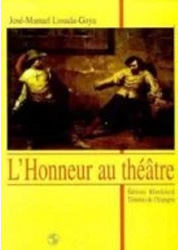
L’Honneur au théâtre. La Conception de l’honneur dans le théâtre espagnol et français du XVIIe siècle, París, Klincksieck, 1994, 412 p. ISBN: 2-252-02951-X.
Summary
L’Honneur au théâtre deals with the theatology of honor in 17th century theater. The corpus chosen ensures the unity of the whole: 21 Spanish and 21 French plays with a Spanish plot. The analysis of the plot leads to a general typology of honor: honor based on public opinion, on virtue, on money, on purity of blood. As might be expected, the French plays hardly differ from the Spanish ones as regards honor based on virtue or money (with exceptions: the status of the poor hidalgo versus the rich gentilhomme). Surprising, however, are the differences in public opinion and purity of blood: the conduct of women or the stain of impure blood is conceived differently in France and entails a different treatment on the boards. The book delves into the Spanish imaginary of broad sectors of French artistic life.
Reviews
Michel Philippon, Lettres Actuelles (Mont-de-Marsan), 7-8 (1995): 116.
Didier Souiller, XVIIe siècle (París), 48 (1996): 193-194.
Jean-Pierre Leroy, Revue de Littérature Comparée (París), 70 (1996): 365-366.
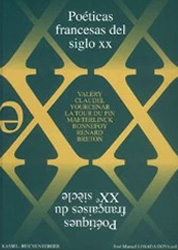
Poéticas francesas del siglo XX. Poétiques françaises du XXe siècle, José Manuel Losada Goya (ed.), prefacio de Yves Bonnefoy, Kassel (Alemania), Reichenberger, col. “Problemata Literaria”, 1994, XIII-217 p.+8 il. ISBN: 3-928064-83-5.
Summary
This book establishes the fundamental lines of poetic production of the 20th century in French literature through relevant writers for their creative and theoretical contribution: Valéry, Claudel, Yourcenar, La Tour du Pin, Maeterlinck, Bonnefoy, Renard, Breton. It is worth mentioning the participation of some collaborators, three French, one Spanish and one American professor, as well as the prologue written by Bonnefoy himself.
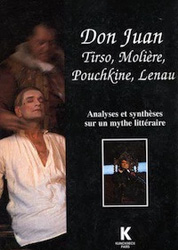
Don Juan. Tirso, Molière, Pouchkine, Lenau. Analyses et synthèses sur un mythe littéraire, José Manuel Losada Goya y Pierre Brunel (eds.), París, Klincksieck, 1993, 129 p. ISBN: 2-252-02939-0.
Summary
The aim of this compilation of articles is to provide a broad and secure basis for the study of four significant texts of the myth of Don Juan. The quality of the professors, professors of French or comparative literature from six universities, is to be noted. The approaches are varied: mythocriticism, hermeneutics, psychoanalysis, sociology, literary history.
Reviews
Raymond Trousson, Revue de Littérature Comparée (París), 70 (1996): 103-104.
